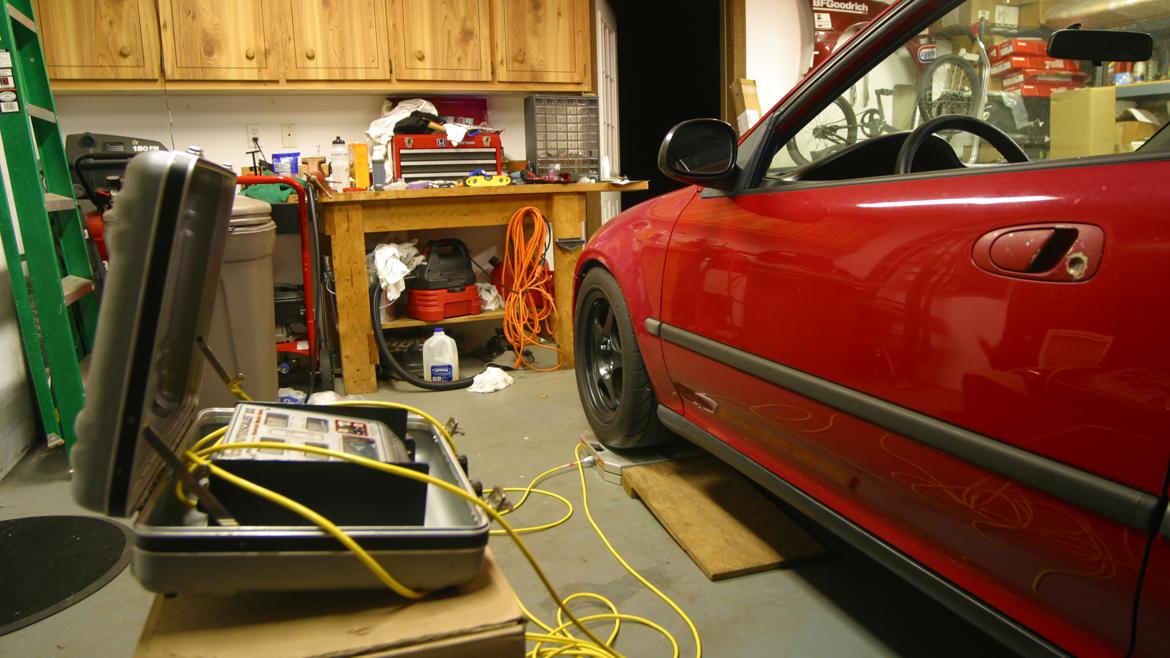te72
New Reader
1/3/18 11:33 p.m.
Thanks for posting this. I've read all the info before, in various places, but it's good to have a refresher. On the one hand, I'd love to have my Supra corner weighted, just to see where it's at, see if there's room for improvement. On the other hand, it drives really, REALLY good for being setup by this idiot behind the keyboard, and I really don't wanna spoil a good setup by chasing after a perfect setup... at least not yet.
Would be interesting to see how close to ideal I got it though, given how well it handles already. Basically so long as I don't completely overcook a corner entry, it does better than any car this heavy has any right to...
Good stuff. I've had my cars corner balanced a lot, but never really looked into the science of it. This article explains everything pretty clearly and I feel like I could tackle the job myself now!
Toebra
Dork
11/16/18 4:12 p.m.
I see disconnecting the sway bar, and how to do it, but disconnect the shocks?
Toebra said:
I see disconnecting the sway bar, and how to do it, but disconnect the shocks?
I had the same question. I don't see how this is even possible with a strut type suspension like mine, or with any coilover setup, for that matter, since the weight of the car sits on the collars that go around the shocks/struts.
In reply to Toebra :
Unless you have some kind of stupid hyper-critically damped NASCAR type dampers this isn't really necessary. To get good accuracy easily make sure you get the low hanging fruit first like removing the friction between the tires and the scales so there is no bind. Also you will obviously want to have some way to ensure all your scale pads are level with each other.
te72
Reader
11/16/18 9:05 p.m.
I would imagine that disconnecting the shocks is only applicable to setups where the shock and spring are separate, like a lot of solid axle cars, or Mk2 Supras in my experience.
Funny. I dropped my integra off at edge to have this done today. looking forward to getting it back!
Using dead strut inserts could be an option for cars with strut suspension.
My big stumbling block on this subject is how to get accurate readings by removing all the friction/bind from the tires, sway bars, bushings, etc. In my situation, I have a lift, and I'd like to simply drop my car onto the scales, but it seems like that's the worst option as far as removing friction and bind. Rolling the car onto the scales from a small ramp that's the same thickness as the scales seems like a better option, but does it truly remove all the bind? In other words, to make this method work, wouldn't you really have to drive the car around, preferably going over a few pretty serious bumps, before driving onto the ramps? This gets very tedious, given the number of iterations it typically takes to get the corner weights right.
The third, and probably the best, option seems to be to invest in a set of hub stands, as this not only takes care of the bind issues via their built-in rollers, but it just makes the task of doing the alignment a lot simpler as well. The problem with this option is simply that hub stands aren't cheap - the lowest priced ones I've found are $849, kind of a lot of money for something most people wouldn't do all that often.
Maybe I'm over-thinking this, but I was amazed when I got my new scales, and let my car down on them for the first time. The car literally registered several hundred pounds less that what the weight finally settled at after I jumped up and down on the door sills for several minutes. Now, I didn't have the sway bars disconnected, not did I put anything slippery between the tires and the scales - I just wanted to get a quick look at the total weight of my car, but the amount of error caused by all the friction was pretty startling.
Interested in hearing peoples' opinions and (preferably) experiences.
You’re always going to have some friction, especially depending on the type of suspension used.
Struts and trailing arms generally aren’t great in this case as they have a lot of inherent bind. Using dead struts and lots of bearings will help.
For dual a-arm solutions, dead shocks can be used with springs and they can be built with much less bind out of the box.
Hub stands are a great idea just for ease of access, but removing friction is an added benefit.
Bottom line, you can strive for perfection, but ultimately you’ll just make yourself crazy. Strive for repeatable and take the measurement as a data point, instead of an absolute.


































